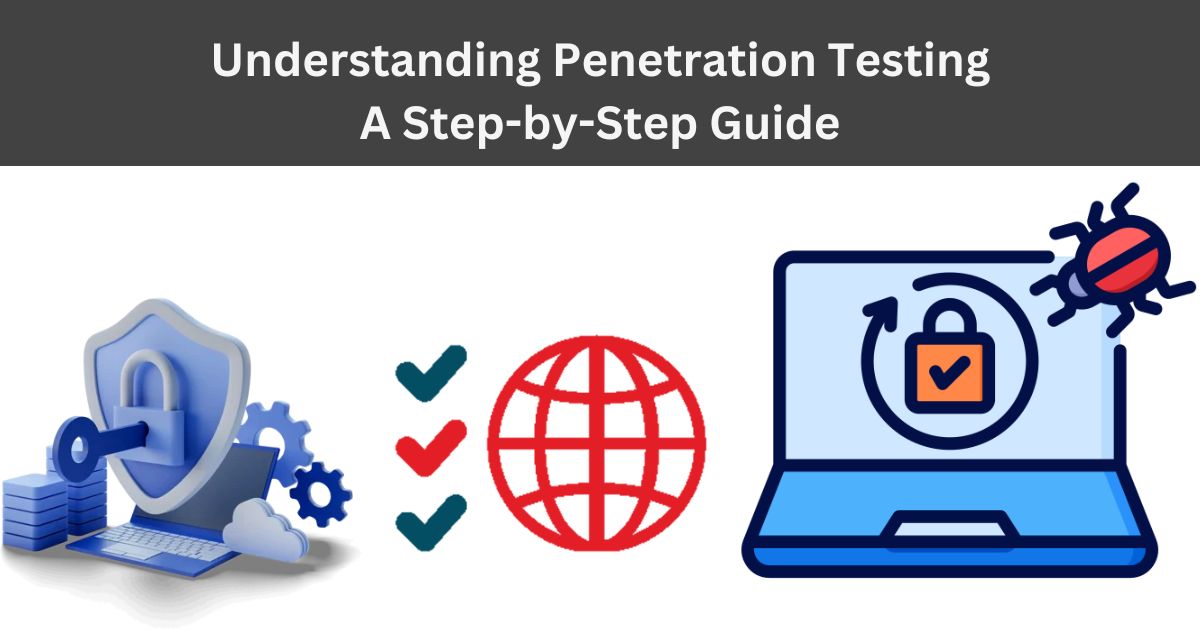Understanding Penetration Testing - A Step-by-Step Guide

Hacking refers to accessing someone’s personal information without their knowledge or permission. Since the 1960s, hacking has evolved significantly. The number of attacks on IT organizations, governments, and personal computers is steadily increasing. Unfortunately, many organizations are still not prepared to defend against these increasingly sophisticated attacks.
The concept of ethical hacking was introduced to combat this. Companies and governments began hiring ethical hackers to help protect their systems because only a hacker can effectively counter another hacker. This led to the development of "penetration testing," a more specific form of ethical hacking. There are distinct differences between these terms, despite their interchangeability.
What is Ethical Hacking?
Ethical hacking involves identifying weaknesses or vulnerabilities in computers and information systems, much like malicious hackers do, but with the intent to improve security. Ethical hackers use the same techniques as malicious hackers but report the vulnerabilities to the organization for remediation.
There are different types of hackers:
Malicious Hacker: An individual who hacks intending to cause harm. These hackers aim to steal data and disrupt or gain unauthorized access to systems for malicious purposes. They are also known as "Black Hat" hackers.
Ethical Hacker: A hacker who uses their skills to identify and fix vulnerabilities. White Hat hackers work with organizations to identify bugs and fix security issues before malicious hackers can exploit them.
Gray Hat Hackers: These hackers fall somewhere between black hat and white hat hackers. They may engage in activities that are technically illegal but do not have malicious intent. For example, a gray hat hacker may find a vulnerability in a system and not exploit it but inform the organization without prior permission to test the system.
Responsibilities of an Ethical Hacker
Ethical hackers have several key responsibilities, including:
- Writing scripts to test for vulnerabilities.
- Creating tools to enhance security.
- Conducting risk assessments.
- Establishing security policies.
- Training staff on network security practices.
What is Penetration Testing?
Penetration testing, or pen-testing, is a subset of ethical hacking that focuses specifically on testing information systems for vulnerabilities. While ethical hacking covers a broader range of activities to protect systems, penetration testing zeroes in on identifying and exploiting vulnerabilities in information systems.
What is Kali Linux?
Kali Linux is a specialized operating system based on Debian, designed for penetration testing and security auditing. It includes hundreds of tools for various security tasks such as computer forensics and reverse engineering. Some key features of Kali Linux are:
- Over 600 pre-installed tools.
- Open-source nature.
- Extensive customization options.
- Support for a wide range of wireless devices.
- Multi-language support.
- Efficient injection capabilities.
The Process of Ethical Hacking and Penetration Testing
Penetration testing and ethical hacking follow several structured phases:
- Reconnaissance: Gathering information about the target using tools like NMAP and Hping.
- Scanning: Identifying vulnerabilities using tools such as NMAP and Nexpose.
- Gaining Access: Exploiting vulnerabilities using tools like Metasploit.
- Maintaining Access: Installing backdoors in the target system for future access using Metasploit.
- Covering Tracks: Erasing evidence of the attack to avoid detection.
- Reporting: The tools used to document vulnerabilities and the success rate of operations.
Areas of Penetration Testing
Penetration testing covers various areas, including:- Network services: Identifying vulnerabilities in network infrastructure (e.g., firewall testing).
- Web applications: Finding security weaknesses in web-based applications (e.g., email services).
- Client-side software: Detecting vulnerabilities in software on user devices (e.g., media players).
- Wireless networks: Examining wireless devices used in an organization (e.g., smartphones, tablets).
- Social engineering: Tricking individuals into revealing confidential information (e.g., through phishing).
Penetration Testing Tools
The following are some of the most commonly used penetration testing tools:
- BeEF
- Metasploit
- NMAP
- Nessus Vulnerability Scanner
- Wireshark
- SQLMap
- BackTrack
- John the Ripper
A Career in Ethical Hacking
Now is an excellent time to consider a career in ethical hacking. The demand for ethical hackers and penetration testers is rising as cyberattacks become more frequent and sophisticated. Organizations are continually seeking skilled cybersecurity experts to defend against these threats.
Understanding penetration testing and ethical hacking not only helps protect valuable information but also contributes to making the digital world safer. As cyber threats continue to evolve, ethical hackers play a crucial role in safeguarding our digital lives.